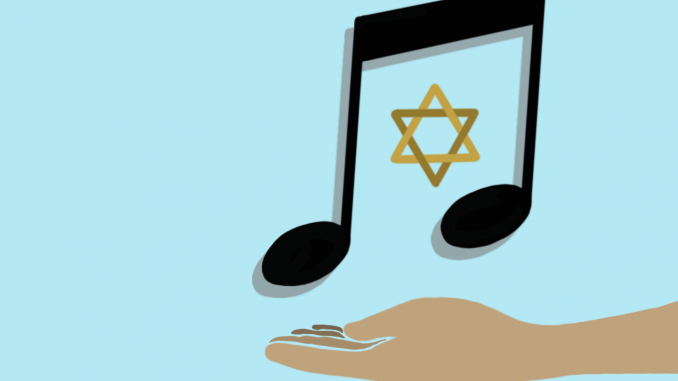
Gabriela Barrett prepared a song which she had sung many times in the weekly Shabbat services she and her family attended. But on this occasion, there would be no congregation or instruments accompanying her — just her sisters.
In a hospital room, Barrett, a freshman theater major, and her sisters held their grandfather’s hand and sang “Mi Shebeirach,” a song of healing typically sung at the end of Shabbat. Barrett was not expecting it to truly heal her grandfather, but to give him comfort.
“We knew that modern medicine couldn’t fix everything, but we knew that God was going to be with him, no matter where he went,” she said.
Growing up in the Jewish faith, Barrett learned music was heavily tied to her religion.
She grew up attending Mainline Reform Temple in Wynnewood, Pennsylvania and began singing in the choir after the cantor came to her class in third grade.
The cantor plays an important role in Jewish worship, said Laura Levitt, a religion, Jewish studies and gender professor.
“A cantor is a Jewish music professional. They help lead the congregation in prayer and also train young people,” she said. “This is a very serious position, and cantors are trained and get a graduate degree after college, not unlike Rabbis, but focused on Jewish liturgy and Jewish music.”
Music is a hallmark of worship for the Jewish community, Levitt said, adding that the Torah, the Jewish holy book, is often chanted.
The Torah is written in Hebrew. Even if people don’t understand the language, they can still understand the message of a song through the music, Levitt added.
This was how Barrett learned the teachings of the Torah. She said even when she didn’t understand Hebrew, she could understand its meaning based on the melody and tone of the songs she’d sing.
“Every Jewish song, as well as when you read from the Torah, these are sort of melodies that people follow,” she said. “The V’ahavta, one of the most famous prayers that we do during Shabbat, there is a universal tune to that song.”
Barrett’s cantor taught her and her friends at weekly practices to perform on different occasions, but to her, the most important was the family service on the first Friday of the month.
Barrett and other members of the choir would snack on Oreos and milk before they performed for their family and friends in the congregation. During these services, she felt most at home, she said.
“When the service starts, everyone knows the melodies, everyone’s clapping along, and it just fills you up with his warm feeling of being included somewhere and knowing who you are,” she added. “It’s just a sense of family.”
Barrett cherishes the sense of community, particularly because some in the Jewish community may not accept her. Barrett’s mother is Peruvian and her father is Jewish, which she said could be an issue for some in the Jewish community. Judaism is a traditionally matrilineal religion, meaning an individual is often only considered fully Jewish if their mother is Jewish, she added.
Barrett has found a modern way to express her faith as a member of Jewkebox A Capella, Temple’s only religious acapella group. She got the chance to blend her heritage and faith last semester when the group sang a Ladino arrangement. Ladino is a musical mixture of Hebrew and Spanish.
Barrett said she enjoys “delivering emotion” and expressing the different parts of her heritage through art.
“Art, for me, is universal,” Barrett said. “No matter what language you speak or what country you’re from or whatever, if you listen to a song, look at a dance … usually you get the same message no matter what language you speak, which I think is really special.”


Be the first to comment